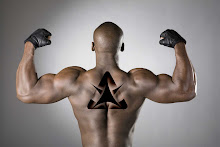
In a classical boxing sense, and in it's use as a combat tool of destruction.
In this break down of the punch will we examine the proper use of the jab, and its attacking points, the construction and destruction of this powerful tool.
The Jab is a forward thrust that can serve a fighter in a multitude of ways.
For example, the jab can be used as a range finder as demonstrated in Vol 2 of Constellation release of "Boxing for Combat" where Farisi Daniel uses the jab to establish a 180-degree arc inside and outside of the squared circle. The jab can also serve as a dig or poke into the soft tissue of the body of your opponent sensitive areas that most fighters shield to defend. Targets include, but are not limited to the head (eyes, nose, chin) neck, shoulders, heart, midsection, hips, and thighs as you change levels seeking new targets. Often when a fighter ignores the jab he throws off his timing and focus as he struggles to keep range, and his opponent at bay. Recently I watched a display of the jab that dismayed me, the individual tried to block a triple jab, which is almost never used in boxing or in a fighting situation. The reason you almost never see a triple jab is due to the nature of the Jab itself unless it's in retreat.
Let's take a look to see the vision of this concept.
Most conventional Boxers shoot the jab from the left forward guard position. The left hand is slightly extended from the body while the elbow is tucked buy the rib cage, and your right hand is offline slightly back by your chin, this is due to the turn of the torso. When shooting the jab the left foot is advanced in a lunging manor, while the punch is being released from it's chamber on a line to the target and snatched back in defense. During the release of the jab your fist will rotate in a 90-degree angle as you push your fore and middle knuckles into the flesh. Constellation shoots the jab from the peek a boo style (made famous by Floyd Patterson\Jose Torres and Mike Tyson), where your hands are held in the raised pillar position with our fist turn into your chin. When the jab is released your fist will turn in a corkscrew manor (180-degrees) to expose the knuckles snapping the punch at the end, before returning it back to the raised pillar position (like Mike Tyson).
Notice that when you Jab in this manor your shoulder will rotate up to protect your chin as you extend your arm, the timing is to reduce the movement of the body hiding the intent of the jab, then retracting the punch quickly to shift your position (rocking your torso slightly left to right) as a defensive counter to your opponent's counter.
One of the keys in both styles is the turning or corking of the fist, and the snapping of the punch at the point of release while timing the stomping of your lunging foot as you move forward. This basic mechanical function is the foundation of a perfect jab, thus the punch is more in the lunge (using the legs) than in the shoulders (using the arms). Some fighters use a modified jab where they practice a whipping motion where the forward lunge is not as pronounced, and the jab can be whipped out and back repeatedly 2-3 times varying the target as your opponent moves his position (Ali vs Frazier). So at no time will a jab be so fixed that it can be blocked by one hand movement. Like any probe, the experience fighter will seek the path of least obstruction rendering any such hand (blocking movement) useless. The frequency of a whipping jab seeks to pop the target instead of digging it like the lunge, the popping technique helps to keep your opponent at bay while allowing you to quickly set up counters to stepping and slipping, the evasive movements of your opponent.
Targeting the soft tissue of the body with the jab requires patience and timing. The body has to have a fall step rhythm thus; soon as the heel of your lunging foot hits the floor you are back on the balls of your feet ready to pivot or shift directions left or right of the cross. The cross in this case is the standard movement that all Boxers use as the foundation of their footwork. To attack with the jab you thrust it into the target as a way to penetrate your opponent's guard and to inflict damage to his body (Larry Holmes). The Jab is also use to keep your opponent off balance and at bay as you pop it at different ranges with an active rhythm (jab, double jab, jab). In the old days a fighter would spend 6 months to a year developing his jab, before adding any other punch. Because a smooth (non telegraph) jab can set the tone for the effectiveness of a Boxer's arsenal. Learning to vary the jab, while selecting targets are just a few of the attributes that a Boxer\ Fighter needs to be successful in the ring or cage. We must never underestimate the value of developing the proper mindset and skill necessary to achieve the level of quality of some of the best fighters years ago and of our day. There are no shortcuts to perfect the path is paved with handwork, sweat and determination. Seek these qualities first and you are well on your way to becoming a strong 52 practitioner.
Constellation



No comments:
Post a Comment